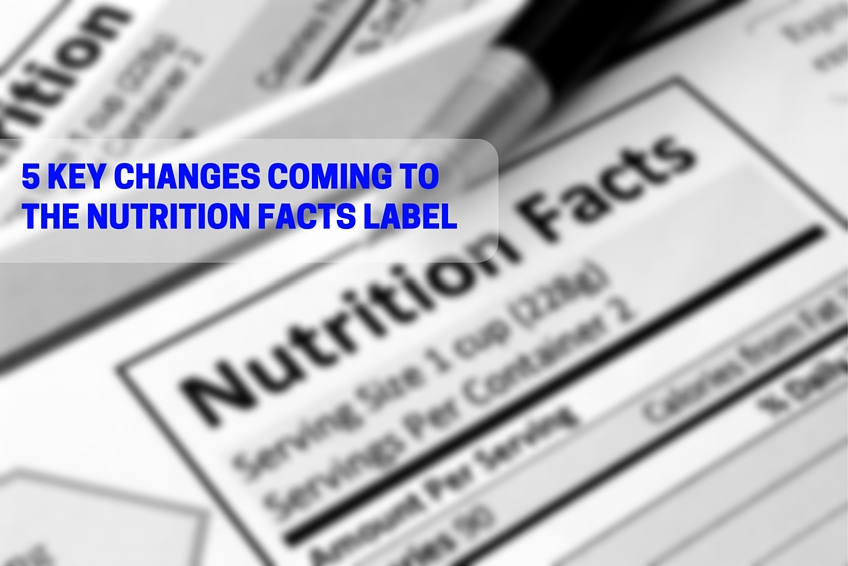It’s been a busy season for the Food and Drug Administration’s venerable Nutrition Facts Label. First, the FDA rolled out a pending overhaul of the label, which had remained more or less the same for the past 20 years. And earlier this month, the FDA announced the launch of the Nutrition Facts Label Online, a useful tool for consumers to make better use of label information.
In a three-part package, Healthy Headlines will highlight the new nutrition labeling and what it means for you.
TODAY: FIVE KEY CHANGES TO THE NUTRITION FACTS LABEL
1. Calories
You won’t be able to miss this change: The number of calories in a serving of the item you’re about to put in your mouth will now be in type every bit as big and bold as the title “Nutrition Facts” itself, and plastered prominently across the top of the label. Previously calorie content was listed in normal type size at the top left of the label.
2. Servings
Also gaining prominence on the label are the amount of servings in a package, as well as what is considered the size of a single serving. Speaking of single servings: That information is also on the move. According to the FDA, “some serving sizes will increase and others will decrease because by law, the serving sizes must be based on the amounts of food and drink that people typically consume, not on how much they should consume.” Examples: A serving size of soda has been increased to 12 ounces, reflecting a typical single-serving can, up from eight ounces; a yogurt serving will reflect six ounces, down from eight ounces.
3. Added sugars
This information, not just total sugar, will be mandatory on the new label. Why? To reflect FDA guidelines, as well as recommendations of the American Heart Association, American Academy of Pediatrics, Institute of Medicine and World Health Organization. Per the FDA, Americans take in so much added sugar – on average, 13 percent of daily diet – that it’s difficult to get enough nutrients while remaining within daily caloric-intake guidelines. The FDA recommends no more than 10 percent from added sugars.
4. What’s in, what’s out
You’ll see vitamin D and potassium added to labels, because they’re valuable (vitamin D for bone health, potassium for lowering blood pressure) and because most Americans’ diets are lacking in those nutrients. On the other hand, you won’t necessarily see vitamins A and C listed anymore; not because they’re not important, but because over the past 20 years most Americans have incorporated sufficient amounts into their diet. (Food manufacturers will be able to list A and C voluntarily.)
5. Updated values
The actual amount of nutrients vitamin D, calcium, iron and potassium (in grams) must be stated, in addition to the percent of daily value each represents. Also, the FDA will update its footnote to make clearer percent daily value: “The % Daily Value tells you how much a nutrient in a serving of food contributes to a daily diet. 2,000 calories a day is used for general nutrition advice.”
Think the changes sound like more than you can process in a single trip around your local supermarket? Well, you have plenty of time to prepare. The FDA says manufacturers have two years to implement the changes (by July 26, 2018) and manufacturers with less than $10 million in annual sales have another year beyond that.

